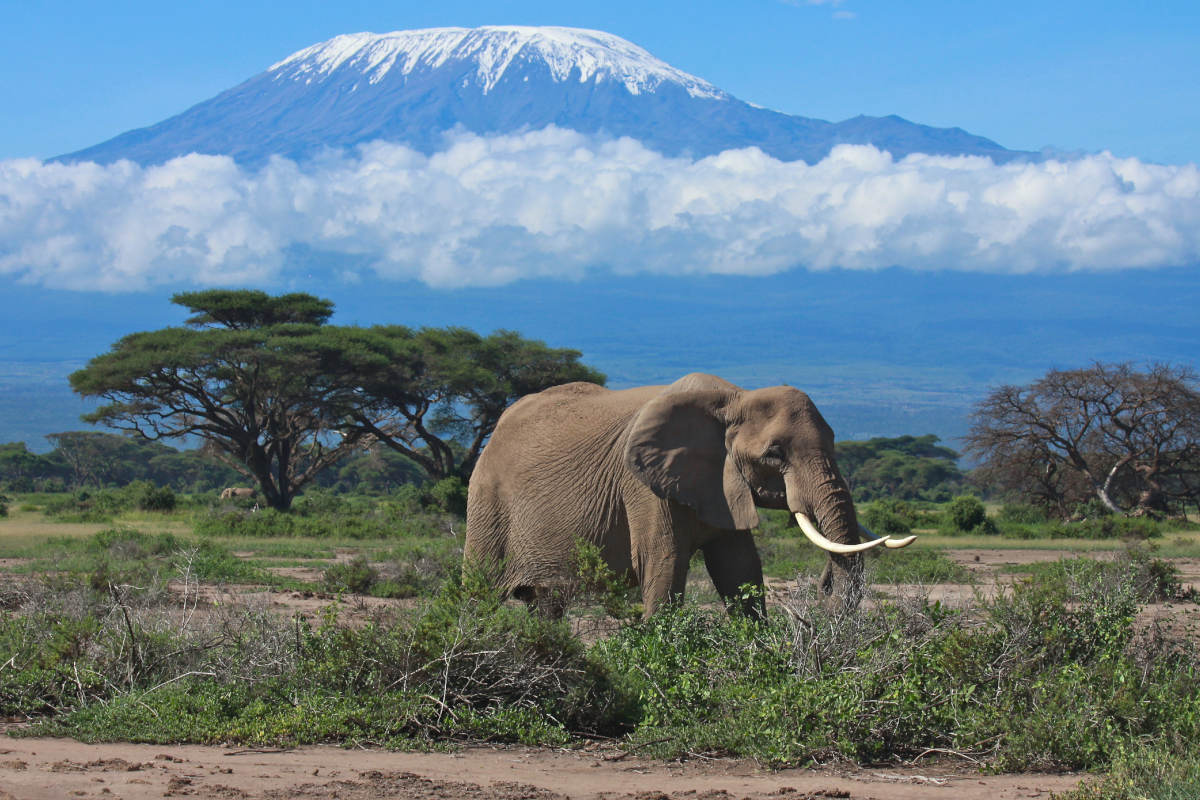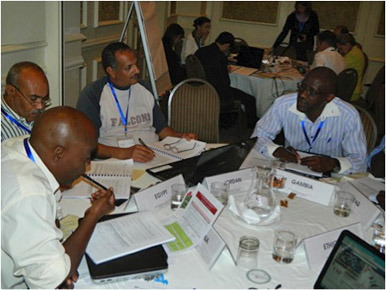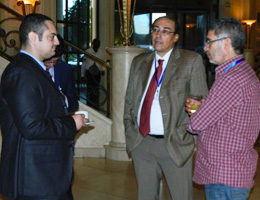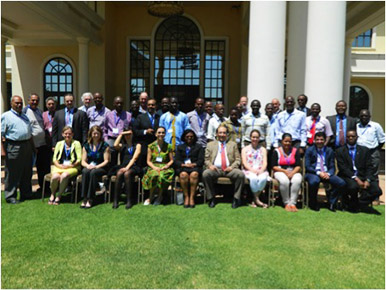
The OIE Sub-Regional Representation for Southern Africa organised a training workshop in Gaborone, Botswana, from 12 to 14 November 2013 which attracted a total of 40 participants comprised of 22 Focal Points from OIE Member Countries of Africa and the Middle East. This was part of the 3rd cycle of the OIE capacity building programme. Participants that were gathered at the Gaborone International Convention Centre were from Botswana, Egypt, Ethiopia, Gambia, Jordan, Kenya, Lesotho, Libya, Malawi, Mauritius, Mozambique, Namibia, Nigeria, Rwanda, Seychelles, Somalia, South Africa, Swaziland, Tanzania, Uganda, Zambia and Zimbabwe.
From left to right : Drs Waleed Waheed Ahmed, Data Management and ICT officer of AU IBAR, Karim Ben Jebara Head of OIE’s Animal Health Information Department, and Dr Abdul F. Mohamed Husni from Libya. Pictures © N. Mapitse (oie) 2013, except where mentioned otherwise
Officially opening the training, the Delegate of Botswana to the OIE, Dr Modisa, emphasized the importance of wildlife to the sub Saharan Africa and its inter-relationship with livestock.
The three day training workshop consisted of 3 sessions divided into presentations and practical exercises. Training started with presentations on OIE mandate and its various standards and was followed by wildlife risk assessment course. This course was developed and implemented by the OIE Collaborating Centre on Research, Diagnosis and Surveillance of Wildlife Pathogens (Canadian Cooperative Wildlife Health Centre). As validation for diagnostic tests used for wildlife is increasingly becoming important, a session shared between the OIE and the OIE Collaborating Centre on Training in Integrated Livestock and Wildlife Health (University of Pretoria) provided the participants with the current work on validation of diagnostics tests for wildlife. The University of Pretoria also presented an overview on international trade of wildlife with a focus on Africa and the Middle East.
The session on the use of the new application of the second version of WAHIS, was conducted by OIE Headquarters using computer based learning. The newly acquired knowledge has empowered the wildlife Focal Points with a wealth of information and resource from the OIE and WAHID – Wild interface to undertake health risk assessments such as in the cases of translocations.
Group picture. Picture © N. Mapitse (oie) 2013.



